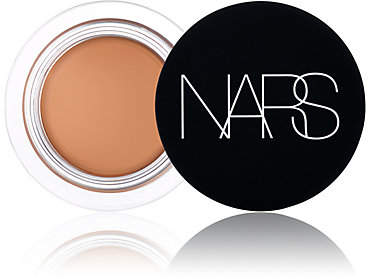This post was originally published on Hey Aprill.
Hyperpigmentation is a harmless condition in which patches of skin become darker in color than the surrounding skin. This darkening occurs when melanin forms deposits in the skin (source). Age spots, melasma, and acne marks are common forms of hyperpigmentation.
There are many reasons for hyperpigmentation – pregnancy, certain health conditions such as Addison’s disease, the use of certain medications, and the most common reason- overexposure to the sun.
There are three main types of hyperpigmentation- UV-induced (overexposure to the sun), hormonal, and post-inflammatory (occurs after injury to the epidermis).
Tackling hyperpigmentation is a three-step process that should be incorporated into your skincare routine:
- Lighten by treating the pigmentation with exfoliating acids.
- Cover with the best foundation and concealer
- Protect by applying broad-spectrum SPF
Lighten Your Hyperpigmentation With Exfoliating Acids
Vitamin C
Vitamin C is a very efficient solution to brightening the overall appearance of the skin, thanks to ascorbic acid. Products that contain Vitamin C brighten the skin and fade small dark marks.
Makeup Artist and Licensed Esthetician Diana Solomon recommends Vitamin C peels as a safe alternative.
Retinol
Retinol is a form of vitamin A that works to increase cell turnover by stimulating cell production underneath the skin. This process slows down with age, allowing layers of dead, thick, sun-damaged skin cells to remain on the surface.
As a result – skin looks dull and thick, pores look large, and sun-related damage such as age spots and blotchiness appear. Products such as ROC Multi-Correxion 5 in 1 Daily Moisturizer and Neutrogena Rapid Tone Repair Dark Spot Corrector contain retinol, which makes the dark spots disappear.
Glycolic Acid
Glycolic acid is an AHA (alpha hydroxy acid) derived from sugar that exfoliates and stimulates collagen production. It reduces oil on the surface of the skin and lightens dark spots effectively.
Mandelic Acid
Mandelic Acid is an AHA derived from bitter almonds that exfoliates like glycolic acid but is more gentle.
Lactic Acid
Lactic acid is an AHA derived from milk that exfoliates skin. Like mandelic acid, it is gentle, and as an added bonus, lactic acid is a human metabolite, so an allergic reaction is less likely.
But be warned, lactic acid does have the tendency to cause extreme purging.
Lactic acids exfoliate the skin, deep cleans pores, fades dark marks, brightens the skin, and stimulates collagen production.
Cover With The Best Concealer
You still have to be out and about in the world, so what do you do to cover the skin until the dark spots are gone? Get a good concealer; that’s what you do!
Protect With Broad Spectrum SPF
After using products that contain AHAs, it is mandatory that you use sunscreen to prevent dark spots from getting darker. I suggest a broad-spectrum sunscreen of SPF 30 or greater.
Most foundation primers that contain SPF protection are great to use, because they have the protection you need, plus face friendly ingredients to moisturize and nourish the skin.
Purchase it all in one convenient kit

Hey Aprill’s Pigment Perfecters diminishes dark spots with key ingredients to lighten and even skin tone + protect skin with a broad spectrum SPF.
By establishing a skincare routine that targets hyperpigmentation by increasing skin cell turnover with the use of chemical exfoliation, the skin will become more even-toned. In addition, the skin will be healthier, brighter, and protected.
How do you destroy hyperpigmentation?













